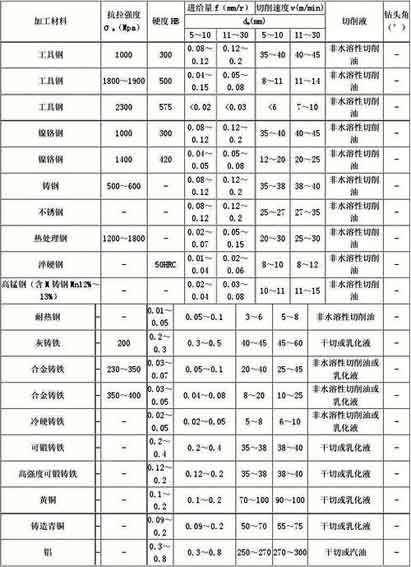What are difficult-to-machine materials?

Difficult-to-machine materials are materials with poor turning and milling workability. Performance of this material is greater than or less indicators (HB> 250, σb> 1000 MPa, δ> 30%, αk> 100 MPa, K <41.8 W / mk) one or more, are all difficult to cut materials. It can also be measured by phenomena in the cutting process (cutting force, cutting heat, tool wear and tool durability, processed surface quality and chip control, etc.).
1. The physical properties of the material:
1) Thermal conductivity K: The allowable Vc of high thermal conductivity materials is higher. Such as cutting Vc of the following materials with cemented carbide tools:
Carbon steel K=48.2~50.2 W/m?k Vc=100~150 m/min
High temperature alloy K=8.4~16.7 W/m?k Vc= 7~60 m/min
Titanium alloy K=6.3~9.6 W/m?k Vc= 15~50 m/min
2) Linear expansion coefficient α: Affects the degree of thermal expansion and contraction of the material and affects the processing accuracy.
2. The chemical composition of the material:
The chemical composition and ratio of materials are the fundamental factors that affect the mechanical properties, physical properties, heat treatment performance, metallographic structure and machinability of materials. Such as:
C: As the carbon content of a material increases, its hardness and strength increase.
Ni: Ni can improve the heat resistance of the material, but it significantly reduces the thermal conductivity of the material; When Ni>8%, austenitic steel is formed, causing serious work hardening.
V: As its content increases, the grinding performance of the material becomes worse.
Mo: It can improve the strength and toughness of the material, but the thermal conductivity of the material decreases.
W: It can improve the thermal strength and high temperature strength of the material and the hardness and strength at room temperature. But it will significantly reduce the thermal conductivity of the material.
Mn: It can increase the hardness and strength of the material and decrease the toughness of the material. When Mn>1.5%, the machinability of the material deteriorates.
Si: It can reduce the thermal conductivity of the material.
Ti: Titanium is an element that easily forms carbides, and its machinability is also poor.
There are Cr, O, S, P, N, Pb, Cu, Al and other elements that affect the machinability of the material.
3. Mechanical properties of materials:
1) Hardness and strength: The material has moderate hardness and strength, and its machinability is relatively good. The higher the hardness and strength, the worse the machinability. Such as normalizing 45 steel: HB200, σb 640 MPa;
Quenched 45 steel: HRC45, σb 2100~2600 MPa. There are also fine impurities in the structure of metal materials that affect the machinability of the material, such as A1203, Si02, Ti02 and so on. Their microhardness is high, which causes mechanical wear on the cutting tools; their machinability is also deteriorated.
2) Toughness αk and plasticity δ: For materials with high toughness and plasticity, the resistance, deformation and heat generated during cutting are large, and their machinability is also poor.
3) Elastic modulus E: It is an indicator of the stiffness of the material. A large elastic modulus means that the material is not easy to deform elastically under the action of external force. However, the material with a small elastic modulus has a large elastic recovery during the cutting process, and the tool friction is large, and the cutting is also difficult. Such as soft rubber E==2~4MP; 45 steel E=200000 MPa: Mo material E=500000 MPa.
4. The metallographic structure of the material:
1) Ferrite: It has very low hardness and strength (HB50~90, σb =190~250 MPa), high plasticity and toughness (δ=40~50%), and it is easy to produce built-up edge during cutting. Machinability is poor.
2) Pearlite: Spherical pearlite has good machinability. (E.g. 45 steel)
3) Cementite: high hardness (HRC66-70), but very brittle (αk=30-35 MPa), due to the increase of Fc, it is easy to chip and make cutting difficult.
4) Austenite: its hardness is not high (about HB200), but its plasticity and toughness are high, the surface hardening and the cold welding of chips and tools are serious, and the machinability is poor. Such as 1Cr18Ni9Ti, high temperature alloys, etc.
5) Martensite: Hardened steel belongs to this type of metallographic structure. It has high hardness and high brittleness, and its relative machinability is 1/3 to 1/10 of that of 45 steel.





